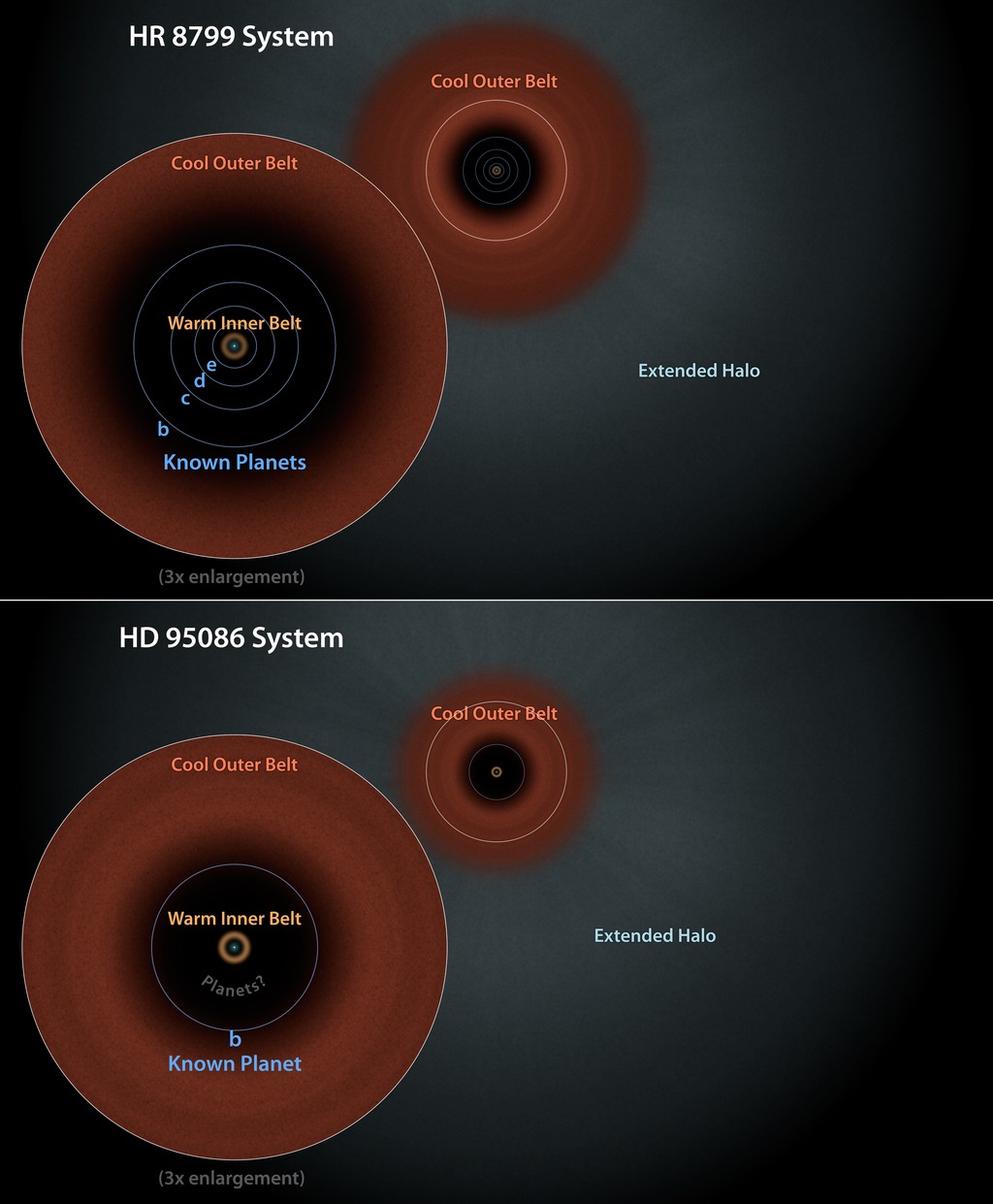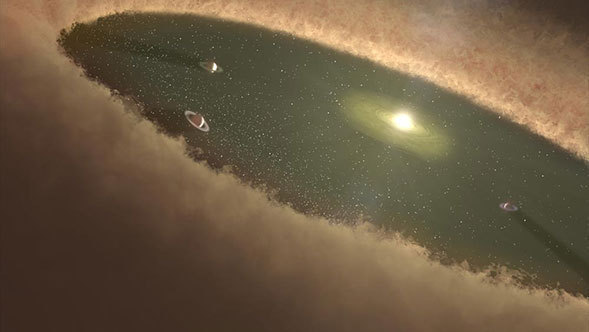
Artwork • November 10th, 2014 • sig14-028
sig14-028
This diagram illustrates two similar star systems, HD 95086 and HR 8799. Evidence from NASA's Spitzer Space Telescope has pointed to the presence of two dust belts in each system: warm, inner belts similar to our solar system's asteroid belt, and cool, outer belts like our Kuiper belt of icy comets. Data from Spitzer and the European Space Agency's Hershel space observatory, in which NASA plays a role, also found extended halos of fine dust around both stars. While HR 8799 has four giant planets known to circle between its two belts, HD 95068 has only one -- at least that is known of so far. The similarities between both systems hint that HD 95068 may also have multiple planets hiding between its two belts.
HD 95086 and HR 8799 are located 295 and 129 light-years from Earth in the constellations of Carina and Pegasus, respectively.
NASA's Jet Propulsion Laboratory, Pasadena, Calif., manages the Spitzer Space Telescope mission for NASA's Science Mission Directorate, Washington. Science operations are conducted at the Spitzer Science Center at the California Institute of Technology in Pasadena. Spacecraft operations are based at Lockheed Martin Space Systems Company, Littleton, Colorado. Data are archived at the Infrared Science Archive housed at the Infrared Processing and Analysis Center at Caltech. Caltech manages JPL for NASA.
About the Object
- Name





